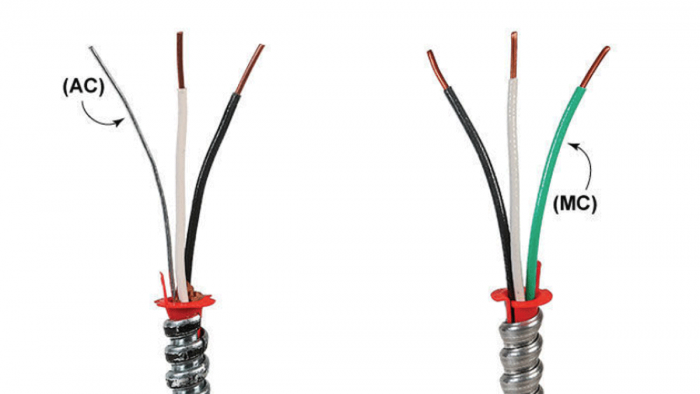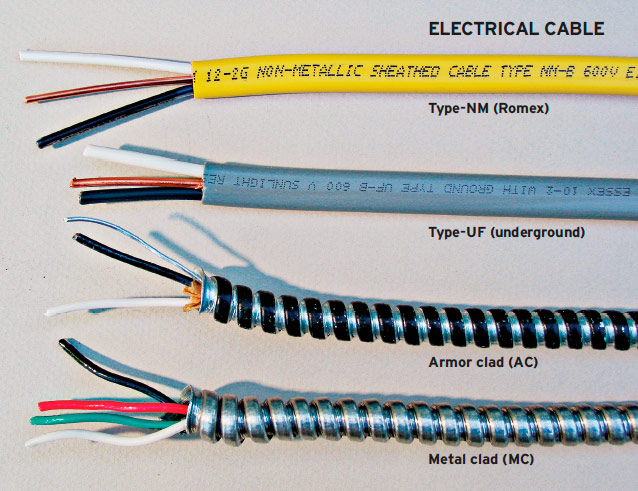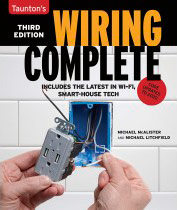Cable and Conduit
Understand the difference between cable and conduit and the various types of each.

Most modern house wiring is plastic-sheathed cable (Romex is one brand), but you may find any—or all—of the wiring types described here in older houses. Inside cables or conduits are individual wires, or conductors, that vary in thickness (gauge) according to the current (amps) they carry. More about that in a bit.
Nonmetallic sheathed cable
Nonmetallic sheathed cable (NM or Romex) is by far the most common type of cable. Covered with a flexible thermoplastic sheathing, Romex is easy to route, cut, and attach. Cable designations printed on the sheathing and the sheathing color indicate the gauge and the number of individual wires inside.
Typically, Romex cable has two insulated wires inside and a ground—which may be insulated or, more often, bare wire. Thus, the Romex used for a standard 15-amp lights-and-outlets circuit will be stamped 14/2 w/grd. For a typical 20-amp circuit, 12/2 w/grd is required. Three-way switches are wired with 14/3 or 12/3 cable, which has an additional insulated wire. Again, wire gauge is rated for the current it can carry, so although you can wire 15-amp circuits with 12-gauge wire, you can’t use 14-gauge wire anywhere in a 20-amp circuit.
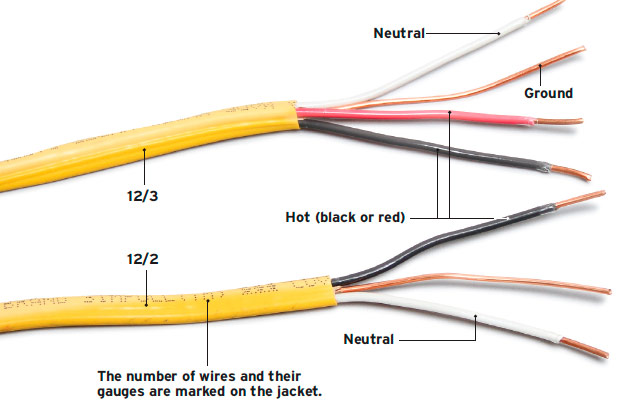
Knob-and-tube
Knob-and-tube wiring is comprised of individual wires, each with a protective sheathing of cloth or rubber. The wires are supported by ceramic knobs and tubes that act as insulators to keep the wires from contacting the framing or other surfaces in a house. This type of wiring is no longer installed, but there’s still plenty of it in older houses. If its insulation is intact and not cracked, it may still be serviceable. You may even be able to extend it, but have an electrician do the work.
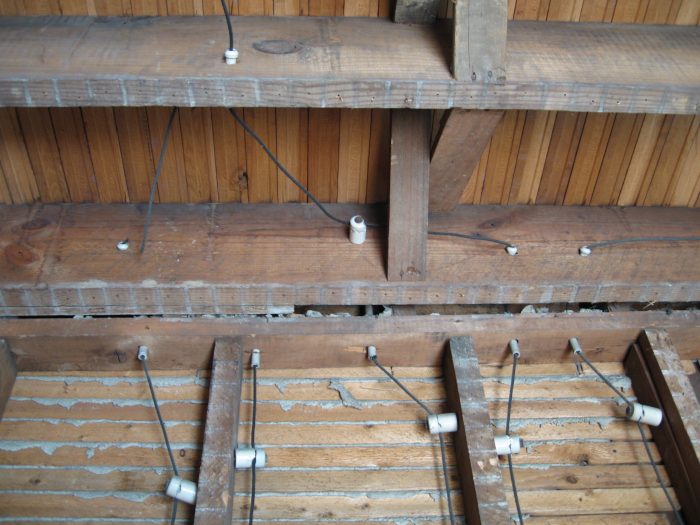
MC or AC cable
Metal-clad (MC) cable or armored cable (AC) is often specified where wiring is exposed and could be damaged. In AC cable, the metal covering of the cable acts as the ground; in MC cable, there is a separate insulated green wire that serves as a ground. To strip either type of metal cable, use a Roto-Split cable stripper; it’s vastly superior to the old method of using a hacksaw and diagonal cutters.
MCAP or MCI cable
MCAP (or MCI) cable has been replacing MC cable in commercial production work because it’s faster to terminate. The “AP” in the name stands for “All-Purpose”, and the cable is essentially an upgraded version of the old MC cable where the armor cladding is designed to be a safe and reliable ground path. You don’t have to bring the cable ground wire into the panel box to terminate it. Instead, the bare ground wire is pulled back around the aluminum jacket and the quick connectors just snap on. Snap the connector into a panel knockout and you’re done. Quick connectors have spring-loaded clips that connect snugly to the panel, so there are no screws to tighten as there are with locknut clamps. When knockouts are limited, using a double-barrel connector (see photo) allows you to quickly put two cables into a panel box.
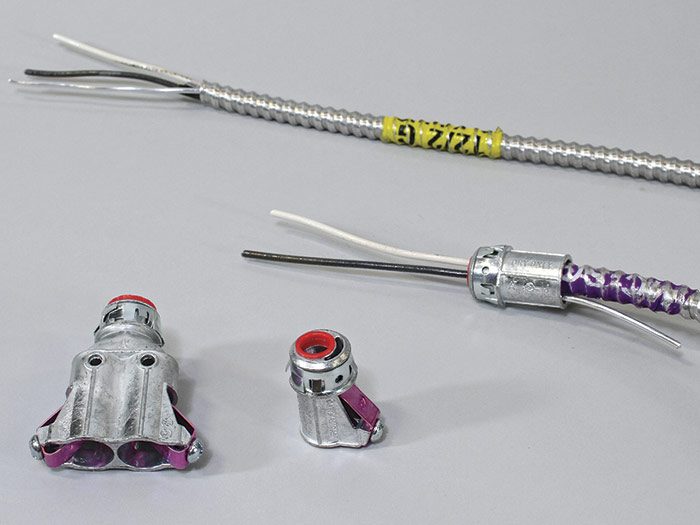
Conduit
Conduit may be specified to protect exposed wiring indoors or outdoors. It is commonly thin-wall steel (electrical metallic tubing, or EMT), or PVC plastic. Metal conduit serves as its own ground. Apart from service entrances, conduit is seldom used in home wiring. When connected with weathertight fittings, conduit can be installed outdoors—and PVC conduit even underground.
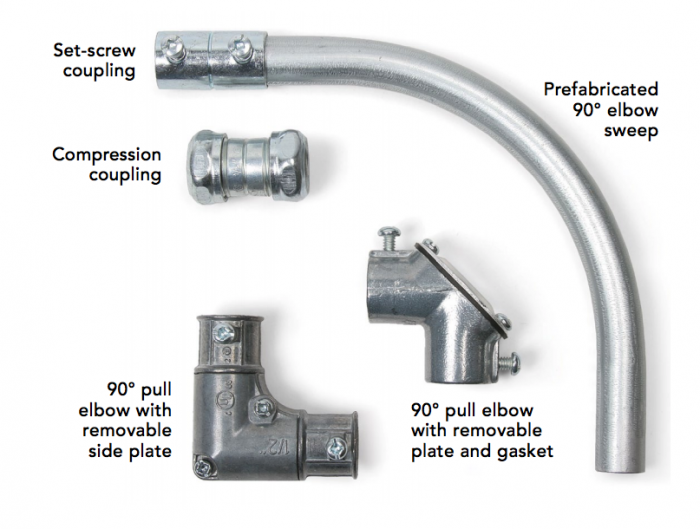
Cable and Conduit for Service Panels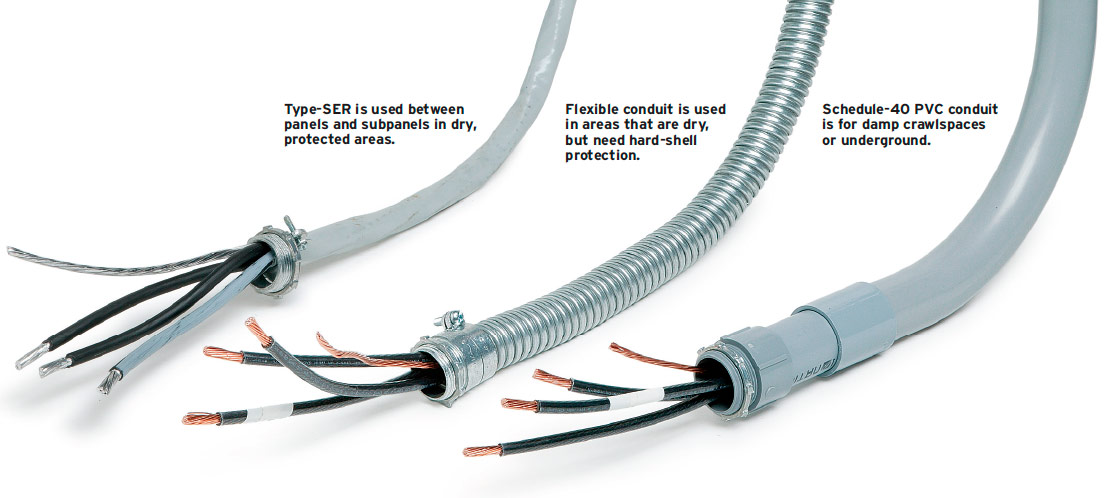

Excerpted from Wiring Complete, 3rd Edition (The Taunton Press, 2017) by Michael Litchfield and Michael McAlister
Available in the Taunton Store and at Amazon.com.

